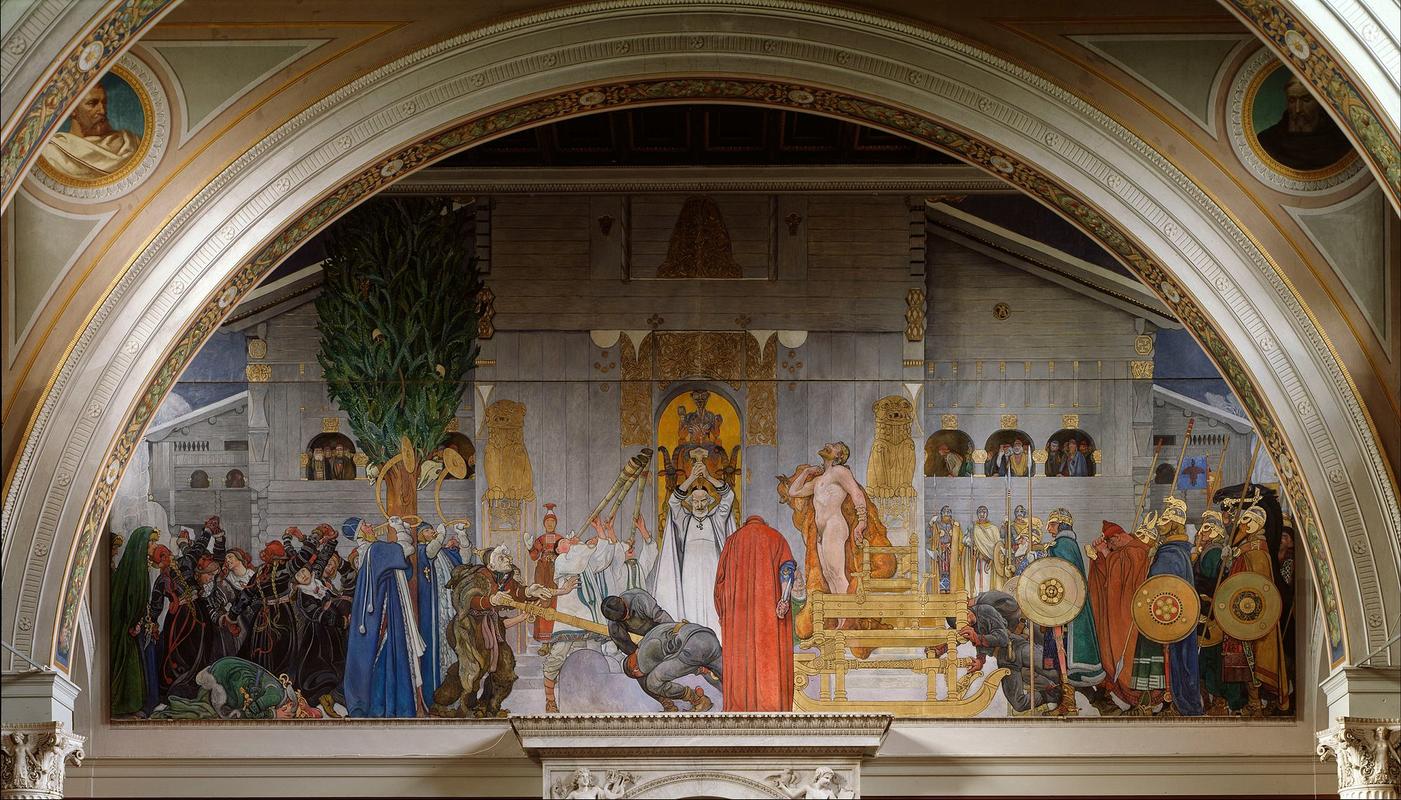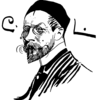More about Midwinter's Sacrifice

Sr. Contributor
Sweden’s most beloved painter created it’s most controversial painting.
When Carl Larsson was commissioned by Nationalmuseum to paint a large wall panel, he chose to portray Gustav Vasa’s entry into Stockholm. After he had finished, only one empty wall panel remained in the central staircase of the museum and it called out to him. Eager to fill the space, Larsson started brainstorming Midvinterblot.
In 1911, Larsson submitted his first sketch for Midvinterblot meaning “Midwinter’s Sacrifice” based on the legend of King Domald from the Ynglinga Saga. In the tale, King Domald is sacrificed to ensure a good harvest after years of famine. It didn’t take long for Larsson to face opposition and criticism to his proposal.
Larsson’s intent was for Midvinterblot to parallel his depiction of Gustav Vasa’s entry into Stockholm. But, no one agreed that a nude king being sacrificed was as an appropriate compliment as Gustav Vasa’s portrayal was seen as a triumph and not a brutal killing. Instead, his critics likened his proposal to a depiction of cannibalism, but not in a positive “gore sells” way like View of Donner Lake, California.
The main issue was Larsson’s interpretation of the tale that King Domald’s sacrifice was voluntary. In the legend, it was the chieftains that deemed his sacrifice a necessity due to a sadly typical old world misunderstanding of what affects crop yields. According to their “logic,” the famine was the king’s fault and killing him would solve it. In contrast, the legend of The Sacrifice of Polyxena, makes it clear that the victim accepted her fate, but there’s nothing in the text to support that King Domald nobly faced his end the way Larsson depicted.
The reworking of a ritual killing into a noble sacrifice didn’t sit well with people at the time. The outcry against his proposal was already quite adamant before the second sketch added the knife held behind the monk’s back as a little “just in case” measure, making the self-sacrifice appear a great deal less voluntary. In most cases when a figurehead is blamed for the country’s problems and sentenced to die, it’s just called an execution. Take Emperor Maximilian for example, and there’s really no debate as to if the death was voluntary.
Despite the negativity against him, and the museum not expressing an interest in purchasing it, Larsson still completed the project at his own expense. It was temporarily displayed in the museum only to be refused and find a home in the Museum of Sketches instead.
The opposition against Midvinterblot never sat well with Larsson. He wrote in his autobiography that one day history would side with him and the painting would eventually be given its originally intended space in Nationalmuseum. Though it took roughly eighty years after his death, Larsson’s prediction did come true.
In 1992, it was borrowed for a Carl Larsson exhibition and displayed in the entrance hall. It took five more years, lots of negotiations and donations but Nationalmuseum finally did acquire Midvinterblot.
Sources
- Carl, Klaus H. Carl Larsson. Paris: Parkstone, 2016.
- Fugelso, Karl. Ethics and Medievalism. Cambridge: Brewer, 2014.
- Larsson, Carl, and John Z. Lofgren. Carl Larsson: the Autobiography of Sweden’s Most Beloved Artist. IA City, IA: Penfield Press, 1992.
- McFarlan, Donald. The Guinness Book of World Records, 1991. New York: Bantam, 1991.
- “Midvinterblot.” National Museum. Accessed September 27, 2019. http://collection. nationalmuseum.se/eMP/eMuseumPlus?service=ExternalInterface&module= collection&objectId=32534&viewType=detailView.
- Sturluson, Snorri, and Jesse L. Byock. Norse Mythology. Penguin, 2005.
- Tsaneva, Maria. Carl Larsson: 112 Watercolors. Lulu Press, Inc., 2014.
Featured Content
Here is what Wikipedia says about Midvinterblot
Midvinterblot (Swedish for "Midwinter sacrifice") is a painting by the Swedish painter Carl Larsson, created in 1915 for the hall of the central staircase in Nationalmuseum in Stockholm. It has been called Sweden's most controversial painting.
The painting depicts a legend from Norse mythology in which the Swedish king Domalde is sacrificed to avert famine. After long debate, the painting was rejected by the museum; but the controversy resurfaced in the late 20th century, and the painting finally was placed where Carl Larsson had intended.
Check out the full Wikipedia article about Midvinterblot












